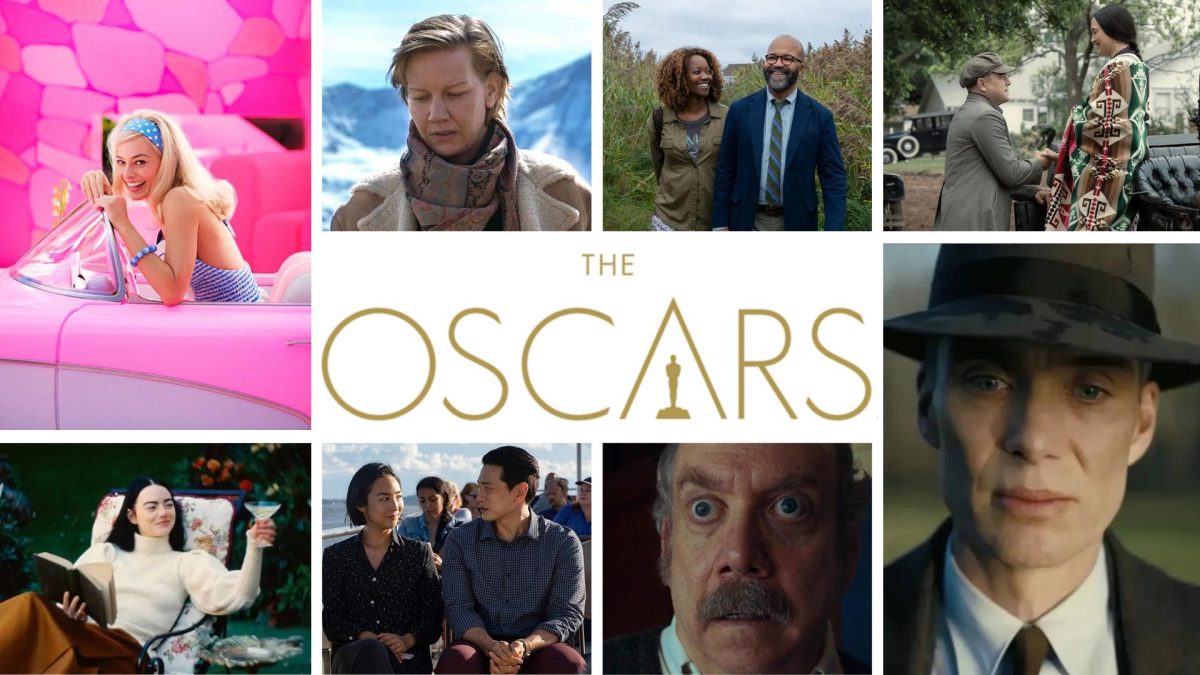For years, the Oscars have faced criticism for seeming as though it “can be bought.” Outrage resulted from Shakespeare in Love (1998) winning Best Picture over Steven Spielberg’s Saving Private Ryan (1998), with many believing the disgraced Weinstein brothers’ ability to “wine and dine”. All of Hollywood had a hand in the Oscar race. Esteemed actors and directors such as Leonardo DiCaprio and Martin Scorsese have respectively found themselves forgotten by the powers that be, only to finally be rewarded once it’s long overdue. The system is broken.
Not to fret, for Statesman is here. Whereas the Oscars are voted upon by each actor, directors, writers, and producers, we are nobodies! You can trust our opinions, because who in their right mind would bother bribing two film buffs hiding in the suburbs of Chicago?
Without the added pressures from the elites, we have collaborated on a list ranking all 10 Best Picture nominees from worst to best. This was a taxing and laborious process, but one that we refused to take lightly. As such, the criteria we used were the following:
- Technical Excellence
- Personal Enjoyment
- Rewatchability
- Bribery
Some of these rankings may surprise; others may seem expected. Regardless, each review and ranking are our own opinions. We encourage each of you to watch these films before and after the Oscars ceremony on March 10, as you never know which life-changing pieces of visual art you may discover.
10) Maestro (Directed by Bradley Cooper) Current Gross: N/A (Only on Netflix)
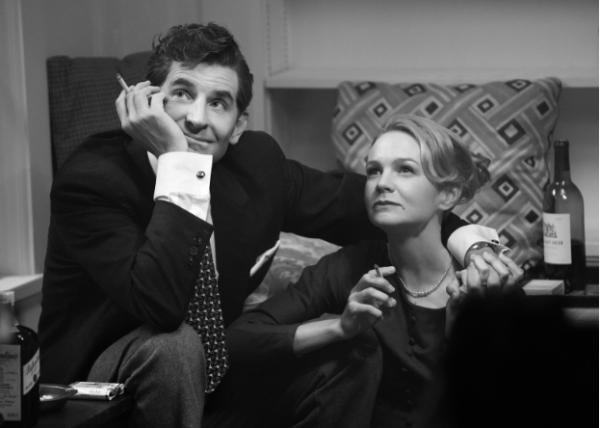
Out of all the films nominated for best picture this year, one of them had to be the worst, and unfortunately “Maestro” is clearly leagues below the other nominees. “Maestro” is a biopic about famed composer Leonard Bernstein (Bradley Cooper) and his relationship with his wife Felicia Montealegre (Carey Mulligan). The film jumps around in time, spanning from black and white segments representing their early years to colorized segments representing their more recent. As a romance film, however, it falls short. Despite both Cooper and Mulligan having solid performances, their onscreen chemistry is lacking, mainly due to a bad script.
The film also fails to live up to Bernstein’s legacy as a composer. It doesn’t teach us why he’s so special or why he’s a great composer. Despite being a biopic, “Maestro” ultimately says almost nothing about the couple or Bernstein’s work. The movie results in a bizarre feeling that you’re watching disjointed clips of his life, rather than understanding Bernstein as a whole.
Despite being the most interesting part of the movie, the film treats his conducting career like an afterthought. By the end of the film, we didn’t learn much about Bernstein or what director Bradley Cooper feels about him. Instead, it seems like the film’s purpose is to be a vanity piece for Cooper, or in other terms, “Oscar Bait.” This theory is supported by a frankly embarrassing press run, where Cooper has boasted that he studied conducting for six years to better prepare for the role, a wildly unnecessary move that doesn’t improve his lackluster performance, and is barely apparent in the film.
Moments like these make Cooper come off like he’s trying to prove himself and reflects poorly on the film itself. That’s not to say Cooper is bad at what he does; his performance is decent and his directing is solid, but none of these things are truly great. “Maestro” isn’t a terrible film, but it’s not a good one—and certainly isn’t Oscar-worthy.
9) American Fiction (Directed by Cord Jefferson) Current Gross: $21.6 Million
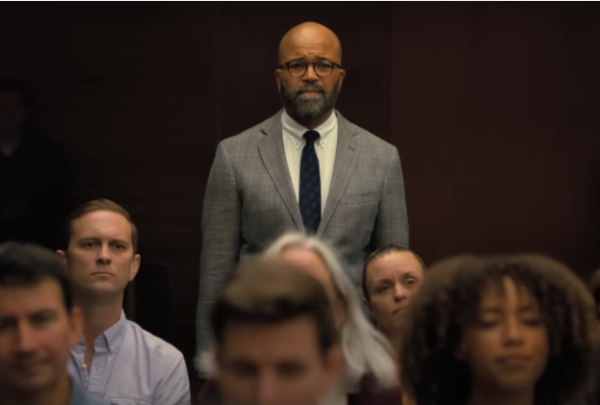
“American Fiction” has a lower spot on this list—not because of substandard quality, but rather a particularly strong group of nominees. Cord Jefferson’s directorial debut is a well-constructed satire of the current state of diversity in art.
Jeffrey Wright stars in an Oscar-Nominated performance as Thelonious “Monk” Ellison, a man stuck at a crossroads in his career. Monk is a critically acclaimed writer, yet he receives little to no attention from audiences nor the press. His critics claim that his stories “aren’t black enough,” which offends Monk, arguing that it is not the place of another individual to tell him how to write about race. In an effort to poke fun at book critics, Monk writes a satirical novel called My Pafology under a pseudonym, which accidentally becomes his biggest commercial hit, winning him numerous awards. “American Fiction” is at its strongest when focusing on the absurdity of Monk’s professional life, providing insightful commentary into the unjust expectations thrust upon unwitting creators.
The film loses some of its focus in the second act, where Jefferson chooses to hone in on Monk’s tumultuous family dynamic. Here, Wright and his co-star Sterling K. Brown shine, delivering subtly profound performances that keep these slower moments afloat. Despite the well-executed family dynamic, it’s hard to not dwell on the sharp wit of the screenplay during Monk’s scenes with his publisher and colleagues and wonder why more time wasn’t spent on such strong satire. Sharply written and carried by fantastic lead performances, a film of this strength may have been higher on this list in previous years. Alas, our contenders are too strong.
8) Barbie (Directed by Greta Gerwig) Current Gross: $1.4 Billion
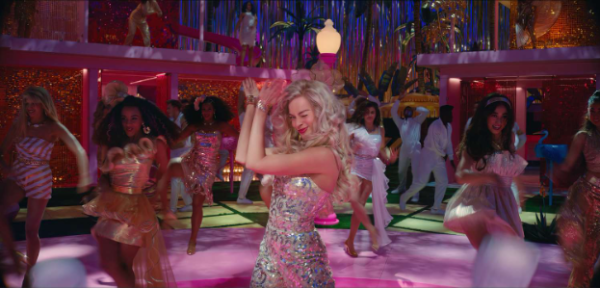
It feels silly writing a review of “Barbie” when it feels like everyone has seen it already. It was the highest grossing film of 2023, had a massive star-studded cast, led the hugely popular “Barbenheimer” trend, and will inevitably dominate the Halloween costume industry for years to come. Thankfully, the film’s popularity is more than deserved.
The film follows the titular Barbie (Margot Robbie) in “Barbie Land,” a world populated entirely by Barbies and Kens. The Kens have only one purpose in life: to serve and impress their Barbie overlords. However, for the Barbies, things aren’t so dystopian; every day is a great day. That is, until Barbie has an existential crisis, and embarks on a journey with Ken to the real world. While Barbie tries to find out what’s causing her feelings, Ken is enamored by the male dominated patriarchy, and goes back to Barbie Land to assert his rule.
The film is riotously funny, with the highlight being Ryan Gosling’s over the top performance as Ken. He is oddly committed to the role and paired with his exaggerated delivery, it is clear why Gosling received a Best Supporting Actor nomination. Ariana Greenblatt delivers a hilarious performance as a moody teenager, and Allan (Michael Cera) is also a standout, though we won’t spoil his role.
“Barbie” can be described as a feminist satire, with much of the film revolving around gender inequality. Despite the movie’s feminist ideas being rather surface level, it manages to do enough to subvert what’s expected from your typical big budget blockbuster. Although only her third film, director Greta Gerwig has proven to have one of the most consistent track records for a modern director. She allows the humor to run wild, while also skillfully reeling it back for the emotional moments. Her team also shaped the stellar production design for Barbie Land, making the sets look like real plastic toys. While “Barbie” is low on this list, that doesn’t mean it’s bad—it just means there was tougher competition this year.
7) The Zone of Interest (Directed by Jonathan Glazer) Current Gross: $19.7 Million

“The Zone of Interest” is a deeply horrifying and true story about the Nazi Commandant Rudolf Höss and his family living next to Auschwitz with only a garden wall separating their home from the concentration camp. Unlike other Holocaust films, “The Zone of Interest” refuses to show what happens in the concentration camps; instead, almost the entirety of the film follows the daily lives of the Höss family with chilling sound design alluding to what’s happening right next door. The film cleverly forces the viewer to imagine these atrocities, which has a much more horrific effect.
Having the film take place from the perspective of the Nazis is an extremely risky choice, but I’d argue it pays off. This choice brilliantly comments on the banality of evil. Coined by Hannah Arendt, a survivor of the Holocaust, the phrase subverts the typical expectation of evil; evil isn’t some abstract idea, it’s something very human. If the Höss family were portrayed as over the top depictions of evil, we wouldn’t question why they’re involved in a horrific scheme.
Director Jonathan Glazer said he strived to avoid the “artifice of cinema” and tried to portray these monsters as human beings, not cartoonishly evil villains. For example, one of the most disturbing scenes in the film has a boy locking his brother in a greenhouse and making a hissing sound with his mouth, mimicking the gas chambers.
Make no mistake, the movie does not make the characters sympathetic in the slightest. Rather, the family’s choice to ignore basic morals is extremely unsettling, making you wonder how they could commit such awful acts if they’re human like us. Its haunting dissection of the human psyche easily earns it a higher spot on this list.
6) The Holdovers (Directed by Alexander Payne) Current Gross: $41.4 Million
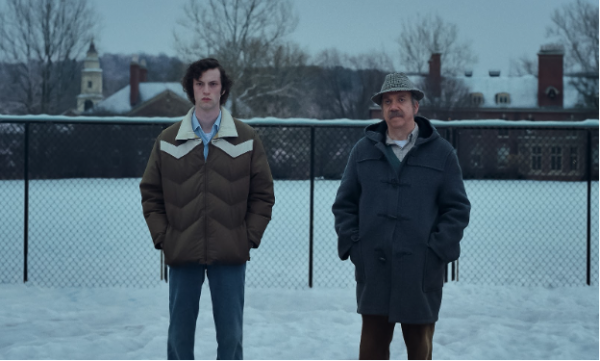
Bear with us for a moment as we start our newest battle of Holiday Wars. Christmas versus Halloween meet in an epic showdown as we determine once and for all who has the greatest selection of holiday specific movies. Christmas delivers some powerhouses: “Home Alone” (1990) and its sequel, “It’s A Wonderful Life” (1947), and “Elf” (2003). Halloween responds strongly, staking a claim to every good horror movie ever created. Alas, almost anything can be a Halloween movie if it’s “scary.” However, Christmas hadn’t delivered a surefire classic since 2003 with “Elf,” and it seemed the genre may have been dying.
Suddenly, Alexander Payne strolls through the door and delivers “The Holdovers” on a silver platter, reigniting interest in this debate. “The Holdovers” is a heartwarming film about the few students at a boarding school who are unable to return home for the holidays. As time progresses, eventually only one holdover remains: Angus Tully, played expertly by Dominic Sessa. This is Sessa’s debut performance, and he goes toe-to-toe with Oscar favorites Paul Giamatti and Da’Vine Joy Randolph.
The three central performances each share moments of humor, with Giamatti playing an outcast teacher forced to spend winter break with the troublemakers. Giamatti’s character (Paul Hunham) is initially unlikable, approaching every interaction in a condescending manner, but as we become closer with our leads, we empathize with him on his Scrooge-like journey towards compassion. As we spend time with Mr. Hunham, Giamatti manages to communicate complex human emotions with nothing more than his facial expressions.
Da’Vine Joy Randolph also delivers an incredible performance as Mary Lamb, a woman who recently lost her only son in the Vietnam War, showcasing strength as she works her way through a broken heart. While there are times when her character feels underutilized, it is made up for through the captivating bond between Tully and Hunham. These lead performances are what allows “The Holdovers” to not only shoot up this list, but stand out as a certified Christmas classic.
5) Anatomy of a Fall (Directed by Justine Triet) Current Gross: $31 Million
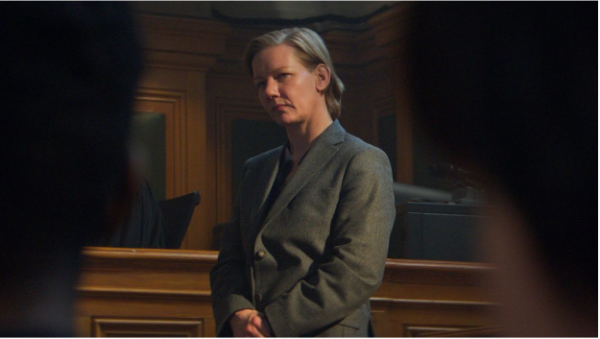
“Anatomy of a Fall” is an expertly crafted French courtroom drama that rightfully serves as lead actress Sandra Huller’s breakout performance. We on Statesman are the first to admit our inadequacies, and among those is a lack of foreign film knowledge under our belt. As director of “Parasite” Bong Joon-ho once said, “Once you overcome the one inch barrier of subtitles, you will be introduced to so many more amazing films.” As we overcome this miniscule barrier more frequently, the Oscars are joining us on this ride, allowing for this film and the aforementioned “The Zone of Interest” to receive well-deserved recognition.
“Anatomy of a Fall” revolves around author Sandra Voyter, whose life is turned upside down after the shocking death of her husband Samuel. Samuel’s death is suspected to have been the cause of foul play, and Sandra emerges as the prime suspect in his murder. The performances in this film are mesmerizing, led by the stoic Huller, who approaches each scene with such calm precision that you become drawn to her but struggle to fully trust her. Milo Machado-Graner also delivers a phenomenal performance as the Voyter’s visually impaired son Daniel.
The precision of these two performances are the prime reason why Triet’s construction of this film works so well. What initially serves as a courtroom drama slowly becomes a more intimate family dynamic, as Daniel reconciles with the fact that his mother might have killed his father. There are flashbacks to fights between Samuel and Sandra that provide us with more context into the inner workings of these characters, transforming this film into an ambiguous tale of an icy marriage. Both Huller and Machado-Graner remain poised when appropriate, with their emotion being confined to their eyes.
Director Justine Triet does a phenomenal job from a directorial standpoint. Triet chooses to linger on seemingly inconsequential details in the Voyter’s home, which forces the viewer into an uncomfortable state. The steady hands of Justine Triet and Sandra Huller transform “Anatomy of a Fall” from a great murder mystery to a compelling tale of a broken family.
4) Past Lives (Directed by Celine Song) Current Gross: $28.6 Million

An unconventional and fresh take on the genre, “Past Lives” is a romance film about a relationship that never happens. After Nora (Greta Lee) moves away from South Korea as a child, Hae Sung (Teo Yoo) thought he’d never see her again. After reconnecting online twelve years later, the pair begin to form a close bond, that is before Nora says they should stop speaking for a while due to their busy lives. After another long twelve years, Hae Sung flies out to New York from South Korea to visit Nora and her new husband.
Despite being a romance film, Nora and Hae Sung never even share a kiss. Instead, the film is essentially a big “what if?” scenario—a relationship that’s too little, too late. Rather than being focused on a complicated overarching plot, “Past Lives” relies heavily on emotion.
Despite being her first feature film, Celine Song proves she is a masterful director, capturing a beautiful vision of New York City. The film draws you in with its striking visuals, creating a certain vibe that’s hard to describe but deeply entrancing. It’s almost like the movie betrays you in a way; it makes you care about Nora and Hae Sung from the very start before stabbing you in the back. Maybe we’re just petty because this movie ruined our day. It’s an extremely sad movie paired perfectly with Teo Yoo’s heartbreaking performance, who unfortunately got snubbed for a nomination at the Oscars.
It’s hard to talk about “Past Lives” without spoiling the ending, which is absolutely perfect. Let’s just say it had our jaws on the floor. It elevated the movie from a solid 9/10 to a 10. “Past Lives” is a brilliant hidden gem that more people should also ruin their days with.
3) Poor Things (Directed by Yorgos Lanthimos) Current Gross: $100.1 Million

A surreal reimagining of Frankenstein, “Poor Things” is an oddly beautiful tale about finding one’s place in the world. Godwin Baxter (Willem Dafoe) creates Bella Baxter (Emma Stone), a young woman with the brain of a baby. Not long after her creation, she leaves to travel the world on a grand adventure with romantic interest Duncan Wedderburn (Mark Ruffalo). The film can be described as a dark comedy, with much of the humor coming from Bella’s naivety and ignorance of societal norms.
At first, the film’s worldwide travels are filled with childlike wonder, matching Bella’s optimistic worldview. While the movie starts off as optimistic, as Bella matures, she is exposed to the harshness of the world around her. She makes several bad but well-intentioned decisions and begins to see that not everything is sunshine and rainbows. “Poor Things” manages to not only be an uplifting comedy, but it also says a lot about finding yourself.
The movie is complemented by a beautiful set design, making each location uniquely stunning in its own way. Emma Stone is arguably one of the greatest actresses working in Hollywood today, right up there with Florence Pugh and Margot Robbie. She completely sells the naïve but good-hearted Bella; between her and Lily Gladstone, it will be a tight race for Best Actress.
There’s no one way to interpret “Poor Things.” It’s easy to view “Poor Things” through a feminist lens, a found family movie, or as a twisted coming of age film. It is a multifaceted masterpiece that will only get better with time.
2) Killers of the Flower Moon (Directed by Martin Scorsese) Current Gross: $156.8 Million*

A master work by a master filmmaker, Martin Scorsese’s colossal three and a half hour film about the genocide of the Osage tribe is as devastating and gutwrenching as it is potent. We encourage any of you reading this who avoided this film due to its runtime to find time, as it is an essential viewing experience. It is simply impossible to watch this and think to yourself, “Yeah, they could’ve cut this scene.” Perhaps it’s time we start trusting one of the greatest filmmakers of all time, the man who delivered “Goodfellas” (1990), “Taxi Driver” (1976), “Casino” (1995), “Wolf of Wall Street” (2013), and so much more.
With arguably the greatest filmmaker alive at the helm, Leonardo DiCaprio and Robert De Niro appear in a Scorsese film together for the first time. Each actor delivers a breathtaking performance. De Niro undoubtedly earns his Oscar Nomination, delivering an intimidating performance as William Hale, the double-crossing individual who helped spearhead the widespread murders of the Osage tribe.
DiCaprio is fantastic in the grimiest characterization of his career, playing the role of Ernest Burkhart. Burkhart is less than earnest, for he blindly follows his vile family, ultimately marrying a woman named Molly Burkhart (Lily Gladstone), a member of the Osage tribe. The scheme that slowly reveals itself is for the white men in this town to marry the wealthy members of this tribe, before they “take them out” amidst mysterious circumstances.
Despite the praise that DiCaprio and De Niro deservingly receive, Gladstone is the star that shines the brightest, delivering a powerful performance as an individual whose life is dissolving before her very eyes. Cinematographer Rodrigo Prieto deserves praise as well; every few minutes, all one can do is marvel at the incredible shots that he and Scorsese put together.
This film’s greatest strength is Scorsese’s admission that he can never fully understand the very real tragedy that he depicts here. He focuses on the vile individuals over the sympathetic ones in an effort to authentically portray the banality of evil, while still shedding light on the perseverance of the Osage tribe. A devastating film, “Killers of the Flower Moon” brings a forgotten tragedy to the forefront of our minds, ensuring that we never forget it again.
*Find our full review of “Killers of the Flower Moon” in Statesman’s third issue on Pg. 9
1) Oppenheimer (Directed by Christopher Nolan) Current Gross: $957.6 Million
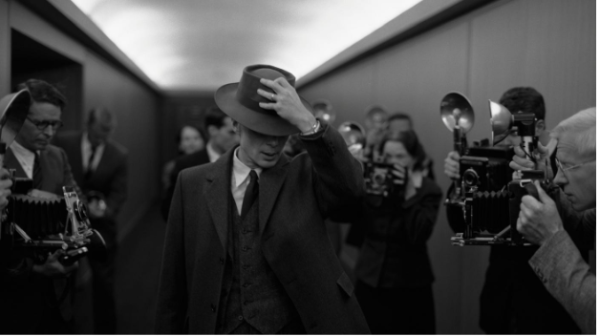
Christopher Nolan has made a career off of blockbuster films that engage the masses while baffling their minds. After being consistently overlooked by the powers that be, Nolan has delivered his most profound work, which also might be his best.
As much as “Oppenheimer” is about the titular J. Robert Oppenheimer, who is played expertly by Cillian Murphy, it is also about the damage the Manhattan Project has done to the world. The movie revolves around the building of the atomic bomb and Oppenheimer’s attempts at coping with the horrors of his own creation. Murphy’s performance is breathtaking, with his piercing blue eyes telling us so much about the damaged psyche within.
Co-starring with Murphy is Marvel alumnus Robert Downey Jr., who delivers a spectacular performance as Oppenheimer’s greatest foe, Lewis Strauss. Nolan spends time exploring the perspectives of both men, with Oppenheimer’s perspective being colorized and Strauss’ in black and white. This allows for compelling motivations to be slowly revealed throughout the film prior to the crescendo that is the final 30 minutes.
We can ramble all day about how impressive the sound design is, how Nolan managed to use 0 VFX shots in a film that depicts the Trinity Test, or how Oscar winning actors, like Gary Oldman and Jason Clarke, appear for a mere five minutes to deliver sensational performances before disappearing for the remainder of the film. The music, effects, lighting, and more all come together to create the most intense scene of the year.
To cap this off, it would be a crime to ignore the musical score, a beautiful, haunting, and majestic creation from Ludwig Goransson that guides us through this masterpiece. Nearly every individual involved in the making of “Oppenheimer” delivers a career-best product in some capacity. As such, “Oppenheimer” is an instant classic, a powerful piece of filmmaking that is sure to stick with its viewers weeks after its conclusion.


